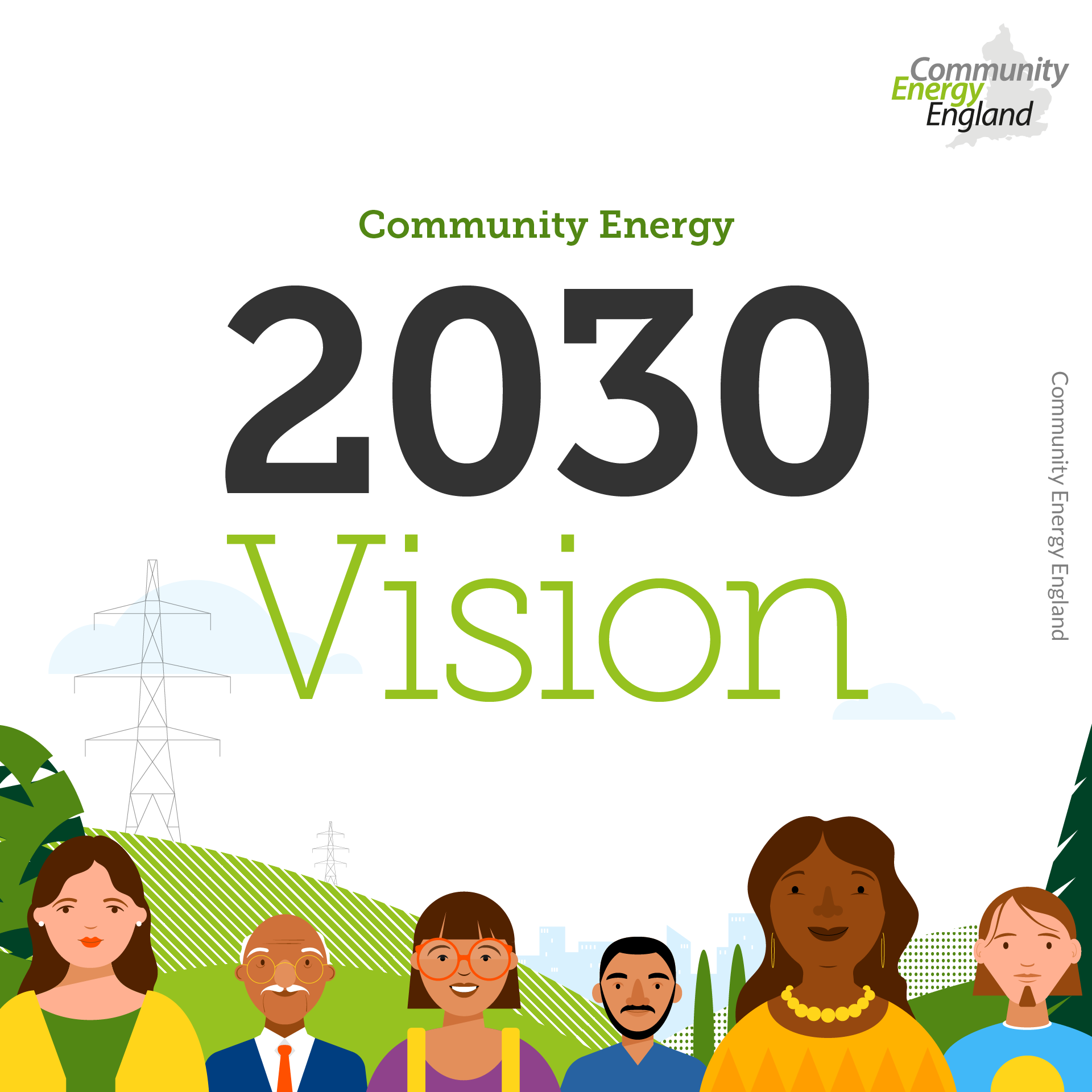
Image: Community Energy England.
Community Energy England (CEE) has launched its Community Energy 2030 Vision, targeting 5,270MW of community power on the energy system.
The vision outlines plans to grow community energy so that it powers the equivalent of 2.2 million homes by 2030, as well as supporting 8,700 jobs. Such growth would save 2.5 million tonnes of CO2 emissions and add over £1.8 billion to the economy each year.
It has been launched alongside CEE’s State of the Sector report, and builds on The Future of Community Energy report produced by SP Energy Networks in January.
CEE said that while in 2014 the government envisaged a million homes powered by community energy by 2020, only 10% of this has been achieved. This is largely due to setbacks in governmental policy and financial support.
The group has said that “we must not make this mistake again” and calls on the government to help the sector grow in order to help the country move towards net zero.
The importance of community energy is highlighted in the Vision, referencing the Committee on Climate Change’s Net Zero Report, which states: “It will not be possible to get close to meeting a net zero target without engaging with people...There is currently no government strategy to engage the public in the transition to a low-carbon economy. This will need to change."
But while more support is required, the community energy space has seen growth in recent years, and the State of the Sector report shows. Community energy in the UK currently contributes 265MW of renewable electricity generation and 13MW of heat for example.
In England, Wales and Northern Ireland, it contributes at least £4.6 million to local economies through community benefit funds and cost savings. There are now 234,000 local people involved in energy efficiency across these regions, who are developing 39 energy storage projects and 47 low carbon transport projects.
The value of community benefit funds has been particularly visible in recent months as the COVID-19 pandemic and lockdown has been felt across the UK.
A number of projects around the country have donated money to help communities get through this period. In April, for example, six community-run solar farms advanced £195,000 in community benefit funds, with the money to go towards supporting their local communities during the COVID-19 pandemic.
Similarly, the Community for Renewables’ collective of four community energy enterprises mobilised £100,000 from surplus generation by community-owned solar projects, which was set aside for Corona Crisis Funds.
While the CEE says it is likely there will be fewer community energy projects in 2020 due to COVID-19, local energy will be key to Building Back Better.
The State of the Sector report prepared by Scene on behalf of CEE and Community Energy Wales and was financed by SP Energy Networks. It works alongside regional reports for Electricity North West and Northern Powergrid.
Sandy Robinson from Scene said: "Over the last 4 years, we have reported on how community energy can deliver long-lasting positive local impacts. This potential has always been tempered by a multitude of barriers as well as a lack of acknowledgement and support.
“In 2020, the community energy sector will face challenges beyond anything experienced to date. Now, more than ever, community energy organisations are demonstrating their value - delivering services and support for local people and businesses in need. These organisations and the wider community energy sector deserves better and more ambitions support, not just during 2020 but long into the future."
The full State of the Sector can be read here, and the full Community Energy 2030 Vision can be read here.
